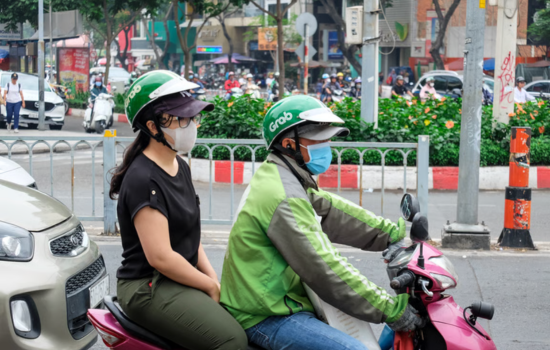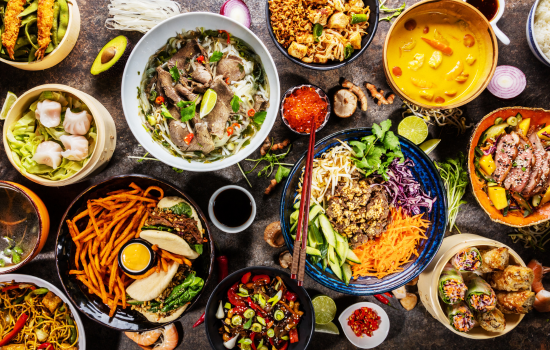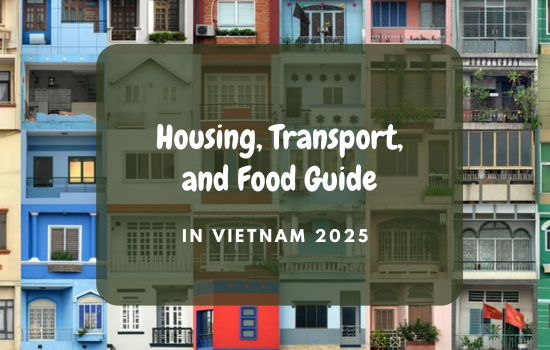Living as an English Teacher in Vietnam: Housing, Transport, and Food Guide
Vietnam continues to be one of Southeast Asia’s top destinations for foreign English teachers. With its growing demand for English education, low cost of living, and attractive culture, it’s easy to see why many choose to call Vietnam home. But what is everyday life really like for foreign teachers in Vietnam? This guide breaks down three essential aspects: housing, transport, and food, giving you a practical look at what to expect and how to thrive.
Housing in Vietnam: What to Expect
Types of Housing for Foreign Teachers
As an English teacher in Vietnam, your housing options will vary depending on your budget and the city you’re in. Common types include:
- Private Studio Apartments: Popular in cities like Ho Chi Minh City, Hanoi, and Da Nang. These usually come fully furnished with a bathroom, small kitchen, bed, and air conditioning.
- Shared Apartments: Ideal for teachers on a tighter budget. You can share a modern apartment with other expats or local professionals.
- Serviced Apartments: These are pricier but offer hotel-like services such as cleaning, laundry, and security. They’re common in central districts.
- Houses for Rent: Available in less central areas, great for families or teachers looking for more space and privacy.
How to Find a Place
- Facebook Groups: Join groups like “Expats in Vietnam Housing” or “Apartments for Rent in HCMC”.
- Local Agents: Many landlords work with English-speaking agents who can help you find suitable places.
- Word of Mouth: Your school or fellow teachers may recommend trusted landlords or agents.
Pro Tip: Always visit the property in person before signing any lease. Read contracts carefully, especially regarding deposits and utilities.
Getting Around: Transportation in Vietnam

Vietnam’s transport system is dynamic, cheap, and often an adventure for newcomers. Here are the most common modes of getting around:
Motorbikes: The #1 Choice
Motorbikes are the most common way to travel in Vietnam. Most foreign teachers either rent or buy a bike shortly after arrival.
- Renting a Bike: Monthly rental ranges from $40–$70. Includes basic maintenance.
- Buying a Bike: A used automatic scooter costs around $250–$500. You can resell it later when you leave.
License Tip: Technically, you need a Vietnamese driver’s license. However, many expats drive with an International Driving Permit (IDP) or simply without one. For safety and legal reasons, it's best to get a valid local license if you plan to stay long-term.
Ride-Hailing Apps
Apps like Grab, Be, and Gojek are widely used in big cities. You can easily order a motorbike or car ride via smartphone.
- GrabBike (motorbike taxi): $1–$2 for short trips.
- GrabCar (private car): $3–$10 depending on distance and traffic.
These services are safe, efficient, and perfect for teachers who don’t want to drive.
Public Transportation
- City Buses: Extremely affordable (just 5,000–7,000 VND per ride), but routes can be confusing for newcomers. Best suited for those who’ve had some time to adjust.
- Metro (HCMC & Hanoi): Hanoi’s Cat Linh-Ha Dong line is operational, and Ho Chi Minh City is launching its own metro line soon. These will eventually become popular with daily commuters.
Pro Tip: Always wear a helmet (even on Grab rides) and avoid driving during rush hour unless you're confident navigating chaotic traffic.
Food in Vietnam: Delicious, Diverse, and Affordable

Vietnamese cuisine is a highlight of living here. From street-side stalls to trendy cafes, the variety of food options is endless - and incredibly budget-friendly.
Eating Like a Local
Most Vietnamese eat out regularly because it’s cheap and convenient. Popular local dishes include:
- Phở (Beef or Chicken Noodle Soup): $1.50–$2.50
- Cơm Tấm (Broken Rice with Grilled Pork): $1.50–$3.00
- Bún Chả (Grilled Pork with Vermicelli): $2–$3.50
- Bánh Mì (Vietnamese Sandwich): $1–$2
Local eateries, known as quán ăn, often serve home-cooked style meals at low prices.
Western and Vegetarian Options
Bigger cities like Hanoi, HCMC, and Da Nang cater well to foreign tastes:
- Western restaurants are common, offering everything from burgers to Italian and Korean cuisine. Expect to pay around $5–$15 per meal.
- Vegetarian and vegan spots are growing in popularity. Look for restaurants labeled “chay” (vegetarian).
Apps like Foody and GrabFood make it easy to order online.
Grocery Shopping
If you prefer to cook at home, here are your main options:
- Local Markets (Chợ): Cheap and fresh, but may require some bargaining.
- Supermarkets: Chains like Co.opmart, WinMart, and Big C offer packaged goods, imported items, and household essentials.
- Expat Stores: In bigger cities, you'll find specialty shops selling foreign cheese, wine, snacks, and more, though prices are higher.
Pro Tip: Learn some basic Vietnamese food words—it’ll help you order confidently and avoid surprises!
Living Well as a Foreign Teacher in Vietnam
Vietnam offers foreign English teachers more than just a job—it offers a lifestyle. Affordable living, warm weather, rich food culture, and attractive communities make it an ideal place for teachers to grow personally and professionally.
To make the most of your time in Vietnam:
- Be open to new experiences.
- Respect the local culture and customs.
- Learn a bit of Vietnamese—it goes a long way.
- Network with other expats and locals alike.
Whether you're teaching in a major city or a small town, Vietnam has the charm, energy, and opportunity to make your teaching journey truly unforgettable.




